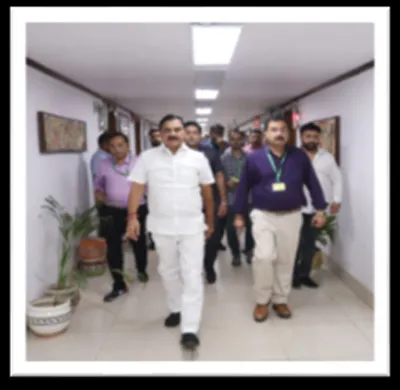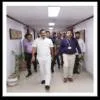Mahendra Pingle, Deputy General Manager Market Development,
Tata BlueScope Steel
Warehouse buildings are made by either the conventional method or pre-engineered steel building method. In both cases, steel roofing and wall cladding are preferred over the conventional cement or asbestos roofing sheets.This is because asbestos sheeting may cause health issues. It also radiates more heat inside the building and water leakage could occur from the sheet joining and hook locations. Additionally, it leads to high maintenance costs on replacement of damaged sheets, steel structure and its heavy foundation cost.
Mahendra Pingle, Deputy General Manager Market Development, Tata BlueScope Steel explains the guidelines on selecting the right roofing materials for warehouses.
Background
Metal roofing or wall cladding is one of the principal building components that acts like an envelope; it helps to transfer the load to a secondary member, restraining the secondary steelwork and also provides thermal as well as acoustic insulation. Considering all these parameters, the building designer or specifier understands the cladding material for its steel properties (thickness and grade), type of corrosion resistance, metallic coating, coating mass, type of paint system and performance, shape of profile and wind load capability as well as water tightness. Selection of the right material helps to provide a longer life to the building, low maintenance, thermal comfort on heat and cold, flexibility on design and aesthetics that last longer.
To have a proper understanding of the material, the following steps can be followed while drafting the product specifications for prestigious projects. Any deviation in product specifications, may lead to paying a high cost on building maintenance or for early replacement of products.
In each stage, a recommendation has been given on the right product specifications to be implemented.
Step 1: Base steel selection: Steel determines the strength of the roofs, for various roof curves, steel of different yield strengths are required. The available yield strengths include min 550 MPa; min 340MPa/300 MPa and 250 MPa. The steel thickness should be selected as per the design requirements. Hi-strength (G550) steel 0.42 mm BMT to 0.45 mm BMT, G340/G300 0.50 mm BMT to 1.4 mm and G250 grade 0.60 mm to 0.80 mm BMT.
Recommended thickness and grade for roofing and walling: 0.45 mm BMT trapezoidal or concealed clip fixed profile is typically used for straight plane roofs, the recommended grade is G550. Concave or convex shapes use a standing seam type profile, the recommended grade is the G300 material in 0.55 mm BMTû0.60 mm BMT.
In truss-less seam profile roofing, the recommended thickness is 0.80-1.4 mm BMT G340/ G300.
Step 2: Corrosion resistant coating selection: The corrosion resistance is maximised using a critical coating composition.
Galvanised coating is available in the market
with Z275; Z180; Z120; Z90 as per IS 277. Z275 =275 g per sq m coating mass is used on both sides for building construction typically for secondary structural ie purlin and structural decking and cold room applications in case of sandwich panels. Recommended metallic coating for roofing and walling: ZINCALUME AZ150 is used for general applications. AZ200 is recommended for harsh conditions (marine, air with high pollution levels, etc). Products comply with AS 1397/ ASTM A792M / IS15961.
Step 3: Paint system selection:
The paint system is to be selected according to its application and aesthetic requirements.
The available paint systems are as follows:
Resin system It is a super durable polyester for exterior applications - type 4 for durability and aesthetic property. It is a polyvinyl di-fluoride (PVdF) with minimum 70 per cent Kynar plus 30 per cent acrylic - type 3 category where colour retention is important.
Silicon modified polyester- This is not preferred due to high film hardness and its lower flexibility. Regular modified polyester type 2 category ie basic resin is only suitable for internal applications.
Pigment type Organic pigments deteriorate quickly when exposed to UV giving a patchy overall appearance. It is a cost effective pigment. Hence, it is only recommended for internal applications.
Hundred per cent inorganic pigments have very high colour fading resistance and are used for exterior applications as they are exposed to UV radiations.
Water harvesting: The paint system used for cladding should not comprise heavy metal in the coatings.
Green product: Cladding products should comply with the green building criteria. Recommended paint system for roofing and walling: Colorbond XRW (Super durable polyester) is a complete system developed for exterior durability and long term aesthetics for general applications. Colorbond Ultra steel is developed for harsh environmental conditions.
(Communication by the management of the company)



















